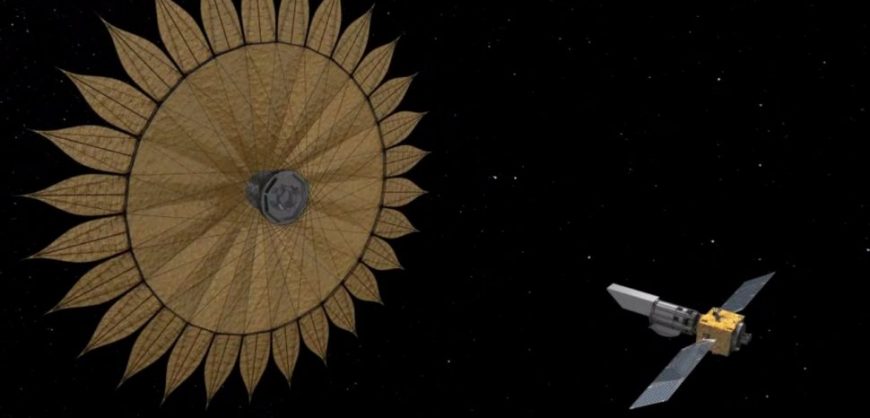Starshade exoplanet-hunting missions may be technologically daunting, but they’re not beyond NASA’s reach, recent research suggests.
Such a mission would employ a space telescope and a separate craft flying about 25,000 miles (40,000 kilometers) ahead of it. This latter probe would be equipped with a large, flat, petaled shade designed to block starlight, potentially allowing the telescope to directly image orbiting alien worlds as small as Earth that would otherwise be lost in the glare.
(Instruments called coronagraphs, which have been installed on multiple ground-based and space telescopes, work on the same light-blocking principle.
There are no starshade missions on NASA’s books as of yet. For such a project to work, the two spacecraft would need to be aligned incredibly precisely — to within about 3 feet (1 meter) of each other, NASA officials said.
“The distances we’re talking about for the starshade technology are kind of hard to imagine,” Michael Bottom, an engineer at NASA’s Jet Propulsion Laboratory (JPL) in Pasadena, California, said in a statement.
“If the starshade were scaled down to the size of a drink coaster, the telescope would be the size of a pencil eraser, and they’d be separated by about 60 miles [100 kilometers],” Bottom added. “Now imagine those two objects are free-floating in space. They’re both experiencing these little tugs and nudges from gravity and other forces, and over that distance we’re trying to keep them both precisely aligned to within about 2 millimeters.”
more at space.com

































